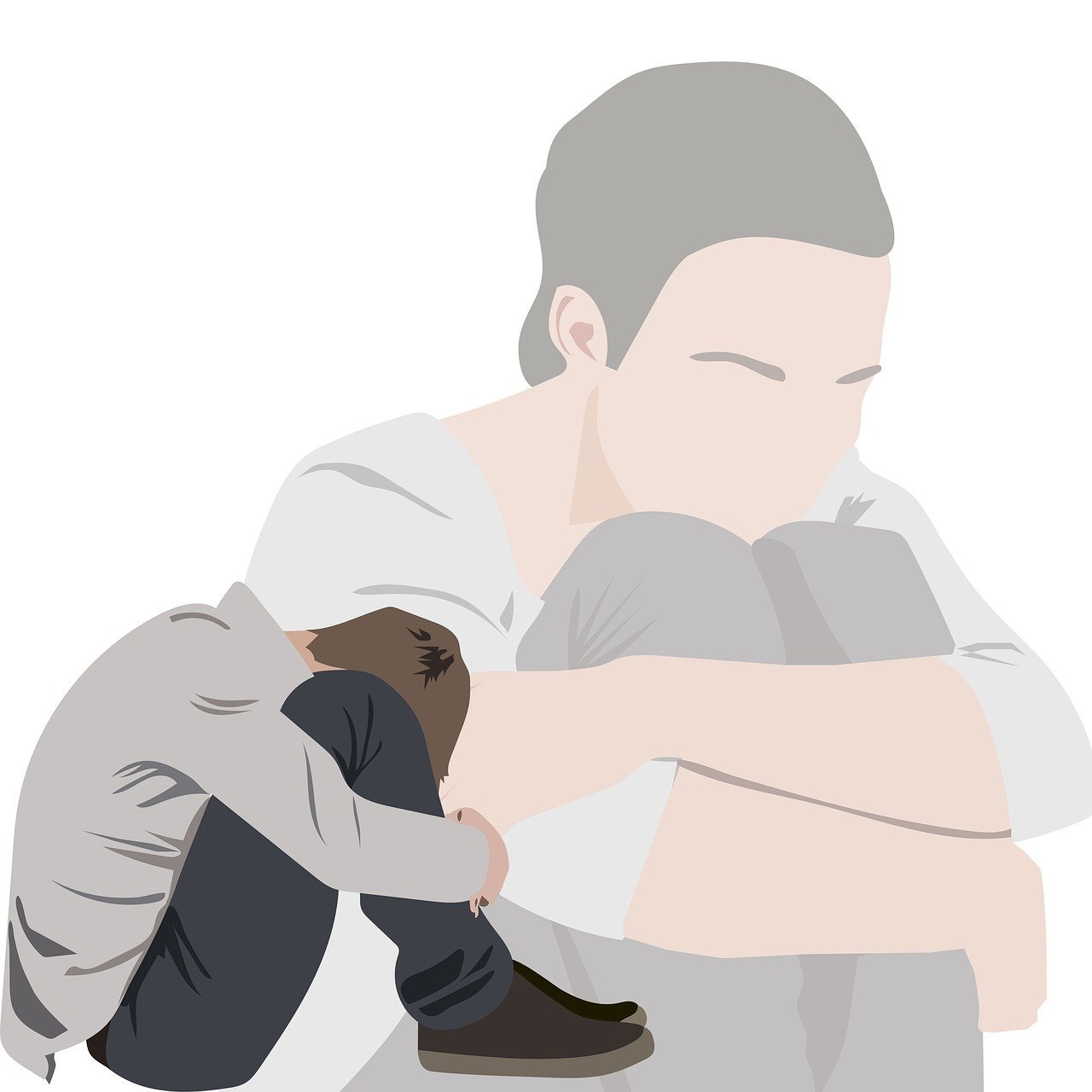Symptoms of Seasonal Affective Disorder (SAD)

Table of Contents
- Understanding Seasonal Affective Disorder
- Common Symptoms of SAD
- Factors That May Trigger SAD
- Coping Mechanisms for SAD
- Seeking Professional Help for SAD
Understanding Seasonal Affective Disorder
Seasonal Affective Disorder (SAD) is a type of depression that follows a seasonal pattern. It typically occurs during the fall and winter months when there is less natural sunlight. While the exact cause of SAD is unknown, experts believe that it may be triggered by a combination of factors including reduced sunlight, changes in the biological clock, and fluctuations in hormone levels.
Here are some common symptoms of Seasonal Affective Disorder:
- Mood changes: People with SAD often experience feelings of sadness, hopelessness, and low energy. They may have difficulty concentrating and may withdraw from social activities.
- Increased irritability: SAD can make individuals more irritable, agitated, and prone to conflicts with others.
- Changes in appetite: It is common for people with SAD to have cravings for carbohydrates and sugary foods, leading to weight gain. However, some individuals may experience a loss of appetite.
- Sleep disturbances: SAD can disrupt the sleep pattern, causing excessive sleepiness, oversleeping, or insomnia.
- Lack of interest: Individuals with SAD may lose interest in activities they once enjoyed, including hobbies, socializing, or even intimacy.
- Physical symptoms: SAD can cause physical symptoms such as fatigue, aches, and pains, as well as a weakened immune system, making individuals more vulnerable to illnesses.
If you suspect that you or someone you know may be suffering from SAD, it is crucial to seek professional help. A doctor or mental health professional can accurately diagnose SAD based on the specific symptoms experienced. They may recommend various treatment options, including:
- Light therapy: Exposing oneself to bright light, usually through a lightbox, can help regulate the body’s internal clock and alleviate SAD symptoms.
- Talk therapy: Counseling or psychotherapy can be beneficial in dealing with negative thoughts, managing stress, and developing coping strategies.
- Medication: In some cases, physicians may prescribe antidepressant medication to help alleviate the symptoms of SAD.
- Lifestyle changes: Engaging in regular physical activity, maintaining a healthy diet, and ensuring proper sleep hygiene can also help combat the effects of SAD.
Remember, SAD is a legitimate condition that affects many individuals. By understanding and recognizing the symptoms, seeking appropriate treatment, and practicing self-care during the darker months, it is possible to manage and mitigate the impact of Seasonal Affective Disorder.
Common Symptoms of SAD
Seasonal Affective Disorder (SAD), also known as winter depression, is a type of depression that is related to changes in seasons. It typically begins and ends around the same time every year, most commonly starting in fall and continuing through the winter months. While the exact cause of SAD is unknown, researchers believe that reduced exposure to sunlight and changes in neurotransmitter levels in the brain may play a role.
If you suspect you or someone you know may be experiencing SAD, it’s important to recognize the common symptoms. While these symptoms may vary in intensity and duration, they can significantly impact an individual’s overall well-being. Here are some of the most commonly observed symptoms of Seasonal Affective Disorder:
- Depressed mood: Persistent feelings of sadness, hopelessness, and emptiness characterize SAD. This mood often lingers throughout the day and lasts for extended periods.
- Lack of energy: Individuals with SAD may feel constantly fatigued, experiencing a significant decrease in energy levels. Simple tasks may become more challenging and exhausting to complete.
- Changes in sleep patterns: SAD can disrupt regular sleep patterns, causing excessive sleepiness, oversleeping, or difficulties falling asleep and maintaining a consistent sleep routine.
- Appetite and weight changes: A significant change in appetite often accompanies SAD, leading to either increased food cravings, specifically for carbohydrates, or a loss of appetite. These changes can result in weight gain or, in some cases, weight loss.
- Difficulty concentrating: People with SAD may encounter difficulty in maintaining focus, experiencing diminished concentration, and a decline in overall productivity.
- Withdrawal and social isolation: SAD can cause individuals to withdraw from social activities, preferring solitude over social interactions. Feelings of loneliness and detachment are common during this time.
- Loss of interest: People with SAD may lose interest in activities they once enjoyed, including hobbies, socializing, and other previously pleasurable experiences.
If you suspect you or someone you know is experiencing SAD based on these symptoms, it’s essential to consult a medical professional for diagnosis and appropriate treatment options. Various treatment approaches, such as light therapy, medication, psychotherapy, or a combination of therapies, can effectively alleviate the symptoms of SAD and help individuals regain control of their lives.
Remember, seeking support and treatment is crucial when dealing with Seasonal Affective Disorder. With the right approach, managing SAD is possible, and individuals can regain their quality of life, even during the dreary winter months.
Factors That May Trigger SAD
Seasonal Affective Disorder (SAD) is a type of depression that occurs during certain seasons, typically in fall and winter, when daylight hours are shorter. While the exact cause of SAD is still not fully understood, there are several factors that may trigger its onset. Recognizing these triggers can help individuals understand their symptoms better and seek appropriate treatment. Here are some common factors that may contribute to SAD:
- Reduced sunlight: The primary trigger for SAD is believed to be the decrease in natural sunlight during fall and winter months. The limited exposure to daylight can disrupt the body’s internal clock, leading to a variety of symptoms associated with SAD.
- Changes in melatonin levels: Melatonin is a hormone that regulates sleep-wake cycles. Reduced sunlight can disrupt melatonin production, leading to feelings of fatigue and lethargy commonly associated with SAD.
- Decreased serotonin levels: Serotonin is a neurotransmitter that affects mood and is often referred to as the “feel-good” chemical. Reduced sunlight can cause a drop in serotonin levels, potentially triggering symptoms of depression.
- Genetic predisposition: Some individuals may be genetically more susceptible to developing SAD. If you have a family history of the disorder or other forms of depression, you may have an increased risk.
- Geographic location: SAD is more prevalent in regions with shorter days and less sunlight, such as those farther from the equator. People living in these areas are more likely to experience the disorder than those in sunnier climates.
- Previous history of depression or mental health conditions: If you have a history of depression or other mental health conditions, you may be more susceptible to developing SAD.
It is important to note that these factors alone do not guarantee the development of SAD. However, they can increase the likelihood of experiencing seasonal depression. If you are experiencing symptoms associated with SAD, it is advised to seek professional help for accurate diagnosis and appropriate treatment.
Coping Mechanisms for SAD
Seasonal Affective Disorder (SAD) is a type of depression that typically occurs during the winter months when there is less sunlight. It is characterized by symptoms such as fatigue, low mood, decreased motivation, and an increased appetite. While SAD can be challenging to cope with, there are various coping mechanisms that can help individuals manage their symptoms and improve their well-being.
- 1. Light therapy: Exposure to bright light is a common and effective treatment for SAD. Light therapy involves using a lightbox that emits bright light to simulate natural sunlight. This can help regulate your body’s internal clock, improve mood, and reduce symptoms.
- 2. Regular exercise: Engaging in regular physical activity, such as aerobic exercises, has been shown to alleviate symptoms of depression, including those associated with SAD. Exercise releases endorphins, which are natural mood boosters, and can also help improve sleep patterns.
- 3. Spending time outdoors: Making an effort to spend more time outdoors, especially during daylight hours, can be beneficial for individuals with SAD. Even on cloudy days, natural light can have a positive impact on mood and overall well-being.
- 4. Healthy lifestyle choices: Adopting a healthy lifestyle can help combat symptoms of SAD. This includes eating a balanced diet rich in fruits, vegetables, and whole grains, avoiding excessive alcohol or caffeine consumption, and getting enough sleep.
- 5. Social support: Seeking social support from friends, family, or support groups can be invaluable when dealing with SAD. Talking about your feelings, sharing experiences, and receiving encouragement can provide emotional support and reduce feelings of isolation.
- 6. Relaxation techniques: Incorporating relaxation techniques into your daily routine can help reduce stress and manage symptoms. Techniques such as deep breathing exercises, meditation, or yoga can promote a sense of calmness and improve overall well-being.
- 7. Seek professional help: If your symptoms of SAD persist or worsen, it is important to seek professional help. A healthcare provider or mental health professional can offer guidance and provide appropriate treatment options, including therapy or medication.
Remember, coping with SAD is a personal journey, and what works for one person may not work for another. It may take some time and experimentation to find the coping mechanisms that bring you relief. With the right combination of strategies and support, it is possible to effectively manage symptoms of SAD and improve your quality of life during the winter months.
Seeking Professional Help for SAD
If you find yourself experiencing recurring symptoms of Seasonal Affective Disorder (SAD) year after year, it may be time to seek professional help. While there are various ways to manage SAD by yourself, such as implementing self-care routines and making lifestyle changes, professional treatment can provide valuable support and guidance to alleviate your symptoms.
Here are a few reasons why seeking professional help can be beneficial when it comes to managing and treating SAD:
- Accurate diagnosis: Consulting a healthcare professional, such as a psychiatrist or psychologist, can ensure an accurate diagnosis of SAD. They will assess your symptoms, medical history, and conduct any necessary psychological evaluations to differentiate SAD from other conditions that may share similar symptoms. An accurate diagnosis is crucial to create an effective treatment plan.
- Personalized treatment plan: A professional can develop a personalized treatment plan tailored to your specific needs. They may recommend a combination of different therapeutic approaches, such as light therapy, psychotherapy, and medication, based on the severity of your symptoms and individual circumstances.
- Monitor progress: Seeking professional help enables continuous monitoring of your progress throughout the treatment process. Regular check-ins with a healthcare professional allow for adjustments and modifications to the treatment plan if necessary. It also provides an opportunity to discuss any concerns or challenges you may be facing.
- Access to resources and support: Professionals have access to a wide range of resources and support networks that can be beneficial for individuals with SAD. They can connect you with support groups, educational materials, and other individuals who may be going through similar experiences. Additionally, they can offer advice on managing SAD during specific life events or transitions.
- Address underlying issues: Sometimes, SAD may be accompanied by underlying mental health issues, such as depression or anxiety. Healthcare professionals can help identify and address these complex issues by providing appropriate treatment options. By working on the root causes, they can support long-term symptom relief and overall well-being.
Remember, seeking professional help is a proactive step towards managing and alleviating SAD symptoms. With the right support, you can effectively navigate the challenges associated with this seasonal condition and improve your quality of life.


























